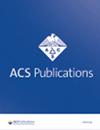Synthesis and Optical Properties of Copper Terephthalate Metal Organic Frame Works
引用次数: 1
Abstract
Two new copper-based metal organic frame work (Cu-MOF21 and CU-MOF-22) was synthesized using bromo malonaldehyde and terephthalic an amino terephthalic acid. They synthesized CU-MOFs were characterized by FT-IR, UV-Visible spectroscopy. The XRD diffraction pattern indicated 2 θ at 17.3° and 26.8°. The Tauc’s method was employed to calculate the band gap of Cu-MOFs and was found that Cu-MOFS-21 exhibited 3.14 eV and Cu-MOF-22 with average bandgap energy at 3.61 eV attributed to the ligand-metal charge transfer. The results indicate that both Cu-MOFs can be further modified by suitable dopants to enhance the conductivity and reduce the band gap energy. Keywords: Metal organic frameworks, Copper metal, Bandgap energy, photoluminescence,对苯二甲酸铜金属有机骨架的合成及其光学性能
以溴丙二醛和氨基对苯二甲酸为原料合成了两种新型铜基金属有机骨架(Cu-MOF21和cu - mof22)。用FT-IR、uv -可见光谱对合成的cu - mof进行了表征。XRD衍射图在17.3°和26.8°处显示2 θ。利用Tauc方法计算了Cu-MOFs的带隙,发现Cu-MOFs -21的带隙能量为3.14 eV, Cu-MOFs -22的带隙能量平均为3.61 eV。结果表明,两种Cu-MOFs都可以通过适当的掺杂剂进一步改性,以提高其导电性,降低其带隙能。关键词:金属有机骨架,铜金属,带隙能,光致发光
本文章由计算机程序翻译,如有差异,请以英文原文为准。
求助全文
约1分钟内获得全文
求助全文

 求助内容:
求助内容: 应助结果提醒方式:
应助结果提醒方式:


